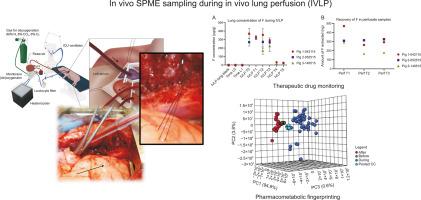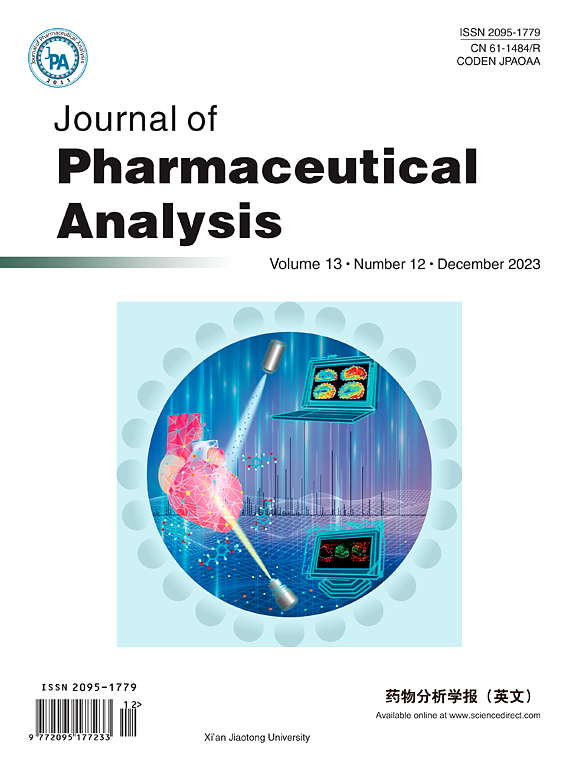In vivo solid phase microextraction for therapeutic monitoring and pharmacometabolomic fingerprinting of lung during in vivo lung perfusion of FOLFOX
Abstract
In vivo lung perfusion (IVLP) is a novel isolated lung technique developed to enable the local, in situ administration of high-dose chemotherapy to treat metastatic lung cancer. Combination therapy using folinic acid (FOL), 5-fluorouracil (F), and oxaliplatin (OX) (FOLFOX) is routinely employed to treat several types of solid tumours in various tissues. However, F is characterized by large interpatient variability with respect to plasma concentration, which necessitates close monitoring during treatments using of this compound. Since plasma drug concentrations often do not reflect tissue drug concentrations, it is essential to utilize sample-preparation methods specifically suited to monitoring drug levels in target organs. In this work, in vivo solid-phase microextraction (in vivo SPME) is proposed as an effective tool for quantitative therapeutic drug monitoring of FOLFOX in porcine lungs during pre-clinical IVLP and intravenous (IV) trials. The concomitant extraction of other endogenous and exogenous small molecules from the lung and their detection via liquid chromatography coupled to high resolution mass spectrometry (LC-HRMS) enabled an assessment of FOLFOX's impact on the metabolomic profile of the lung and revealed the metabolic pathways associated with the route of administration (IVLP vs. IV) and the therapy itself. This study also shows that the immediate instrumental analysis of metabolomic samples is ideal, as long-term storage at −80 °C results in changes in the metabolite content in the sample extracts.


 求助内容:
求助内容: 应助结果提醒方式:
应助结果提醒方式:


